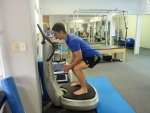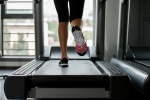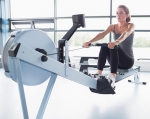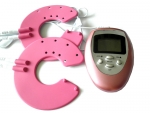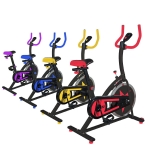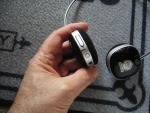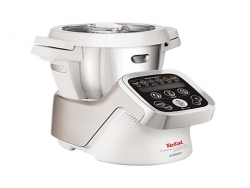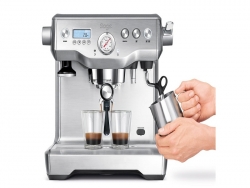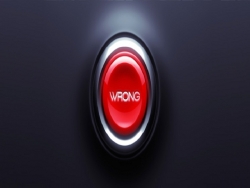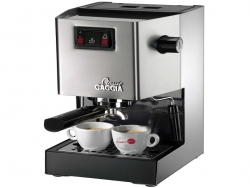US READY - The American's No1 Manufacturer of Treadmill
What Are the Benefits of Treadmill Walking?
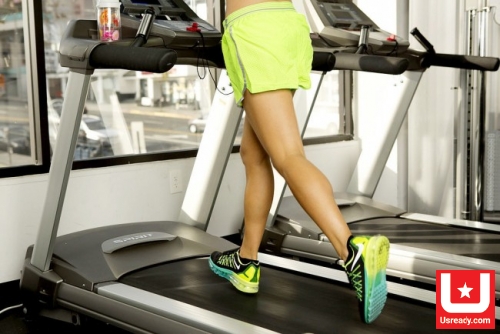
What Are the Benefits of Treadmill Walking?
Walking regularly on a treadmill helps you maintain a healthy musculoskeletal system, which includes your muscles, bones, ligaments, tendons and joints. As a weight-bearing exercise, treadmill walking exerts a pulling force on your bones that helps prevent age-related bone loss. Walking also tones the muscles of your legs and buttocks. Adjusting the treadmill to an incline position improves the toning effect on your legs.
Joint Flexibility
Moderate-intensity exercise, such as walking, keeps your joints flexible. This is particularly important if you have arthritis. Walking on a treadmill instead of pavement has the added benefit of reducing the impact on your ankle, knee and hip joints because the deck and belt cushion your strides. This shock-absorbing capacity allows you to walk with less stress on your joints than typically occurs with outdoor walking. Treadmill walking may also reduce the possibility of joint injuries caused by uneven surfaces that commonly occur outdoors.
Cardiovascular Fitness
Brisk treadmill walking can improve your cardiovascular fitness, strengthening your heart and potentially reducing your blood pressure. Regular walking also helps reduce your cholesterol level, lowering your risk for a heart attack and stroke. Some treadmill models are equipped with a heart rate monitor to help you optimize your cardiovascular conditioning.
Reduced Disease Risk
Regular treadmill walking can reduce your risk for Type 2 diabetes, prediabetes, degenerative arthritis, high blood pressure, depression, insomnia and breast and colon cancer. Walking on a treadmill or participating in another form of moderate-intensity exercise for at least 150 minutes per week reduces your risk of dying prematurely.
Weight Management
Walking on a treadmill or outdoors aids in weight management by burning excess calories and keeping your metabolic rate up. Many treadmills feature a calorie counter that estimates the number of calories burned during your workout. This information proves useful in diet planning, especially if you are trying to lose weight.
Convenience
Walking on a treadmill instead of outdoors avoids some of the drawbacks that may keep you from exercising regularly. You do not have to worry about the weather or outdoor air quality, which is an important consideration if you have asthma or seasonal allergies. With a home treadmill, you can enjoy the freedom of exercising anytime you wish. If you're a committed multitasker, being able to catch up on reading, current affairs or other chores while walking on the treadmill is a powerful draw.
Treadmill Buying Guide: Choose the Right Treadmill for You
Buying and using a treadmill can be one of the most sensible health decisions you can make. As fitness professionals, we recommend treadmills more than any other piece of home exercise equipment. They are functional, easy to use, and when used correctly, provide an ideal way to burn calories, manage weight and strengthen, and enhance your cardiovascular system. But buyer beware! Since treadmills are the most extensive category in the fitness industry, there are more choices than any other fitness equipment. This is a mixed blessing. The following are important tips to make sure you maximize your investment and reach your goals.
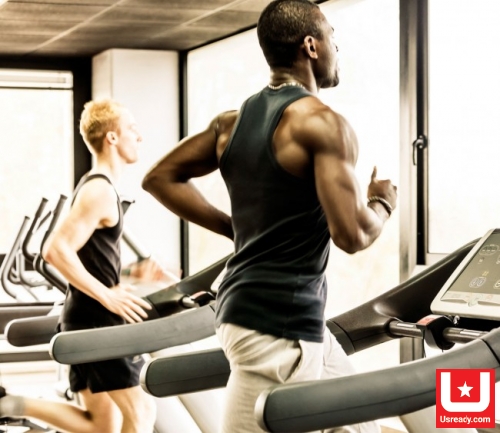
Treadmill Buying Guide: Choose the Right Treadmill for You
The shopping phase is the foundation to make sure that you choose wisely and protect your investment.
- Take your time.
- Educate yourself by doing your homework first online
- Start with a reputable dealer or website
- Ask the hard questions mentioned below
- Test the equipment thoroughly at a store or other site
- Think long term for both your goals and other family members
Shopping for Your Treadmill
Consider your goals and the goals of other potential exercisers in your home before you start your search. Most families will have more than one individual that will likely be using the equipment. For example, "under buying" or buying a low quality, underpowered treadmill that will be used by both a 130lb. and a 200lb. person is a common mistake.
Start your shopping by researching online to find the equipment that interests you. Find out the top rated brands through rating websites, product reviews and more. You should visit the manufacturers’ websites and even their Facebook pages to see who is using their equipment. Often the best brands also make commercial equipment used in gyms and health clubs.
Find out where you can purchase the equipment once you find a few companies and models that interest you. Most can be purchased online through the manufacturers’ websites or other shopping sites and through retail stores. For retail stores, better quality equipment is sold through specialty fitness retailers, not discount stores.
Think about the level of service that you want. The highest level of service will come from a specialty fitness retailer. Purchasing online is often less expensive, but you will need to do more research beforehand about which products you want, and often have to assemble the equipment yourself when it arrives – though this varies by shopping sites.
Authorized specialty fitness retailers. Make a list of local retailers who specialize in fitness equipment and which brands they carry. Many dealers exclusively sell certain brands. This is why it is important to do your research ahead of time. Specialty fitness dealers will likely have a more educated staff, higher quality equipment and the ability to assemble and service your product more effectively. Some have financing options. Sometimes these dealers will also have relationships with personal trainers to help you start your program.
Test the equipment. If you choose to purchase online, try to find a way to test the equipment through a friend, gym, spa or hotel. The best manufacturers often sell commercial products, so you can get a feel for their equipment somewhere else. Note that it isn’t really fair to retail sales staff for you to go into their store, take up their time then go purchase cheaper somewhere else.
If you go to a store, be prepared to test the equipment in the manner in which you will be using it. Almost any unit will feel and seem adequate if you walk on it for 5 minutes. It's only when you begin to put a treadmill through its paces by adding incline, using different programs, or jogging on it that you will start to notice major differences in quality and comfort even vibration and noise. Plan on wearing comfortable exercise clothes and walking or jogging shoes. Don't hesitate to spend 15-30 minutes testing the equipment. A good treadmill is a major investment. Take your time.
Must Haves
Easily navigable console and screen with a large digital readout. Ask yourself, "does the layout make sense?" A sales person should show you some basics like start and stop, but after the first several minutes, the buttons and console should make intuitive sense.
Shock absorption system. This is a major "hook" for almost all treadmills now, but make note. When you walk fast or run, does the deck feel firm and stable, yet forgiving? It should not feel "soft" or spongy as this type of cushioning can create knee injuries in the long run and also wear out quickly. On the other side of the spectrum, you don't want a treadmill that feels like you are running on asphalt. Look for a manufacturer that provides compelling, research-based, evidence on why their cushioning system works. Ask the salesperson why a manufacturer chose their cushioning and how it works. There should be some methodology in the system other than simply putting in rubber spacers or dampeners.
In addition to cushioning, some treadmills even go so far as to make automated adjustments to belt speed in order to compensate for minor variations in foot speed during workouts - a technology that proposes to make your session more comfortable and easier on your body. A test workout at the store will help you determine if these features really improve your workout. Remember, anything that will make your workout more comfortable and easier to stick with is worth considering.
Electronic Features. Many treadmills have a spectrum of features to lure buyers ranging from fans and interactivity, to displaying calories burned. Consider what is important to you and how you will use it. The key is to look for electronic features that are both motivating and challenging. Look for an electronic package that will grow with you as you progress and one that will accommodate the needs of other users in your home. As fitness professionals, some of the most effective features we've found include: interval programs, quick start functions, and specific user IDs that are customizable and can store past workouts to be used in the future.
Adequate Motor. This has become one of the most confusing data points of all. Don't be fooled by the "bigger is always better" rhetoric. In reality, a 2.0 and above continuous duty HP motor is sufficient for virtually any user if the other components are high quality (continuous duty is a measure of horsepower under regular anticipated use and is far more meaningful than "peak" horsepower).
For example, a good cooling mechanism reduces heat on the motor and other key components - extending the life and wear on these parts. A large motor with a poor cooling mechanism makes for a bad combination that will likely result in premature wear and tear on parts as well as poor performance. Look at the treadmill as a system with matched components not just a unit with a "big" or "quiet" motor.
Programming and Motivation
The basics from a fitness point of view are: elapsed time, distance, speed, and incline. Having a measure of calories burned can also be motivating for the right individuals. Consider what additional information or features will help keep you motivated day after day. No one can answer this for you.
Think about what has worked for you in the past and what has not. Remember all that matters in the long term is whether or not you use the equipment day in and day out.
Some of the most useful added features include:
Heart Rate interactivity. Measuring your heart rate (HR) is the surest indicator of progress and proper intensity. Everyone has a target heart rate range they should work within. Too high and you risk injury. Too low and you won't reach your goals. The best treadmills will actually adjust speed while measuring your heart rate to make sure that you stay within this range. You simply punch in the desired HR and the machine will respond accordingly throughout the workout. Look for a HR control that adjusts incline at a minimum. Adjusting both speed and incline may pose some concerns for users. Often on products that adjust both speed and incline, you cannot make manual adjustments. If you are feeling uncomfortable with the settings, you have to stop and get back in to the program. Incline-only HR programs allow for manual speed adjustments to keep you feeling safe and in control.
Pre-set and custom programs. One of the leading reasons people quit a program is boredom. Having a treadmill that provides a myriad of programs will help keep a program fresh and full of variety. The ability to customize a program for your specific needs is also a great feature. Look for some research behind the programs.
User Profile/ID. Separate user IDs that store data for individual users are ideal for families, husband and wife, or workout partners and are great for competing against others and yourself. The user IDs allow you to keep your own odometer, store a database of your workout information, and create custom courses based on your own personal preferences and goals. This is a great way to measure progress. The best treadmills will "remember" your workouts and even those of other users in your house. Look for the ability to store workouts for two or more users in order to duplicate them again.
Ease of Use. In the world of personal training we have found over the years that many clients are intimidated or simply frustrated with the amount of features and buttons on a treadmill. It becomes another obstacle to regular exercise. The best treadmills keep it simple. Big green buttons mean go. Big red buttons mean stop. Emergency stops should be well labeled and it should take no more than 2 to 3 "button pushes" to launch a program. Look for a treadmill that has a manual or "quick start" mode as well as the programs described above. These modes require only 1-2 pushes of a button and you go. Basically, look for a treadmill that will do the thinking for you.
Interval training. Interval training means periods of high intensity combined with periods of lower intensity - a very effective means of increasing fitness levels quickly. Look for programming that offers numerous options for interval training. A typical program operates on a one min rest, one min work interval set-up. The programming should be set up so that all you have to do is set the rest period one time and the work period one time and the machine takes over from there.
Fitness test. This is a great tool for motivation and measuring progression. Essentially this is a pre-set program based on a scientific set of principles that "test" your fitness level at any given time. Essentially you launch the program and the program will take you through a program that gauges fitness level based on variables such as heart rate, distance and speed, etc. Research shows us that the second biggest reason people quit an exercise program is lack of results. Accomplishing a fitness test on a periodic basis will help you see your progress.
Safety and Maintenance
Running and walking on an electronic piece of equipment is very effective and simple. It can also be unsafe and fraught with quality issues if you don't choose wisely. Here's what to look for:
Safety features. Look for basics like a safety key and belt speed that starts and stops in small, gradual increments. Make sure the treadmill has handrails or console grips that are comfortable without being obtrusive. Can you run or walk comfortably without hitting them? Are they ergonomically located so that you can use them when you start or stop? Testing in the store for several minutes will help you choose wisely.
Maintenance. Look for a treadmill that is maintenance-free. Although some basic care is advisable, you should not have to spend time lubricating and servicing your treadmill after every workout. A well-designed unit takes normal wear and tear into account so you don't have to and helps save you time and hassle. Look for a deck that is reversible - meaning you can have the deck flipped when normal wear takes its course on the running surface. A reversible deck essentially doubles the life of your treadmill surface.
Warranty. A treadmill is an electronic piece of equipment. A quality unit is a long-term investment that, with regular use, will require service at some point. Most quality treadmills will offer a lifetime warranty on the frame. When it comes to other components, look for a warranty that provides for at least 1 year of labor and a minimum of 1-3 years coverage on parts. Ask your salesperson what components are covered.
Be sure your warranty includes:
- Motor
- deck and belt
- electronics
Equally as important, does the dealer from whom you are purchasing have their own service staff who are trained and authorized by the manufacturer to service your equipment?
>> See more: US Ready
How to Use a Treadmill For Beginners
Learning to use a treadmill requires many of the same principles of training that runners use to prepare for races. You must increase your stamina gradually, in order to avoid injury, dizziness and problems with blood pressure or dehydration. Find out how to use a treadmill by following this step-by-step guide.
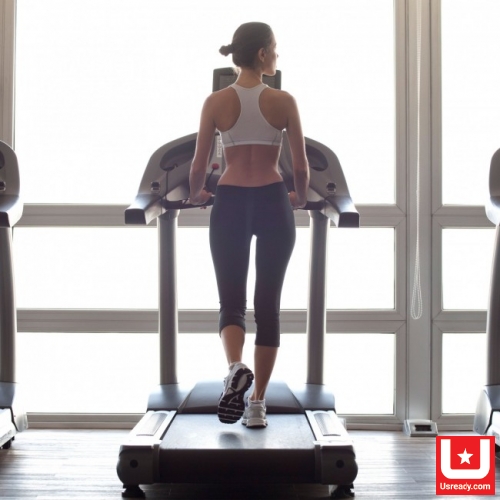
How to Use a Treadmill For Beginners
- Part 1: General Treadmill Tips
- Talk to your doctor if you have joint or back problems.
The doctor can specify whether you must stick with a low-impact workout (walking), or if you can do high-impact training (running).
- Buy some comfortable running shoes.
- Try on as many pairs of shoes as it takes before buying any. The right pair should feel cushioned, support your arches and give you room in the toes.
- Contrary to what many people think, you should not have to break-in running shoes very much. They should feel good right away, so don't settle for anything less than an extremely comfortable shoe. If possible, wear them around the house every day for a week before working out, so that you can take them back if they start to rub.
- Drink 16 to 24 fluid oz.
- (0.5 to 0.7l) of water in the 90 minutes before you do a treadmill workout. Since most treadmill workouts are over 20 minutes, you can sweat heavily and suffer with dehydration later on
- Bring a water bottle filled with at least 16 oz. (0.5l) of water with you to place on the treadmill.
- Make sure to visit the bathroom before you use the treadmill. A break in your workout can interrupt the rhythm and aerobic benefits of your workout.
- Wear thick socks.
Try crew socks, instead of ankle socks, to avoid blisters.
- Warm up and cool down.
- Dedicate 5 minutes before and after each treadmill session to walking at a pace of 1.5 to 2 mph (2.4 to 3.2 km/h) (mph).
- If you walk to the gym, this can also count as your warm up and cool down.
- Swing your arms.
You may be tempted to hold onto the handles at the front of the treadmill to gain your balance. This will keep you from burning calories, using good posture and learning to use it properly.
- Pay attention to the settings on the equipment.
- You should notice a speed section and incline section where you can increase or decrease the settings. These will be the main buttons you use on the treadmill.
- Wait to use programmed workouts until you are comfortable with the manual settings. You will be able to customize your workout to your fitness level.
- Use the safety clip.
Although you may choose to stop using it as you get comfortable, this clip is an emergency shut off. If you lose balance in the beginning it will keep you from falling or being seriously injured.
- Part 2: Beginner Treadmill Workout
- Do a 20 to 30 minute beginner workout.
For the first 15 minutes of your workout, you are most likely burning carbohydrates that you ate recently. After 15 minutes, you begin to burn body fat and build endurance.
- Warm up for 5 minutes.
This warm up can help you to gain balance and avoid injury. Hook the safety clip to your body before starting.
- Walk at 1.5 to 2 mph (2.4 to 3.2 km/h) for 1 minute.
- Increase the speed to 1.8 mph (2.9 km/h) for the next minute. Walk on your toes for 30 seconds of that minute. Walk on your heels for 30 seconds.
- Increase the incline to 6. Remain at a speed between 1.5 and 1.8 mph (2.4 and 2.9 km/h). Walk for 1 minute.
- Take longer strides for 1 minute. If this is hard with the incline, decrease your speed. Return the incline to 0 after 2 minutes at 6.
- Increase the speed to 2.5 for the last minute.
- Keep a pace between 3 and 4 mph (4.8 and 6.4 km/h) for 20 minutes.
You can remain at the same incline and speed during your first week of treadmill use.
- 4. Cool down for 5 minutes, by slowly lowering your pace each minute.
- Experiment with inclines and faster speeds after the first 1 to 2 weeks.
You should increase the incline above level 4 for 1 to 2 minutes and return it to a slower speed. You can increase your speed by .5 mph (0.80 km/h) for 1 to 2 minutes.
Interval training is the best way to increase endurance, speed and fat burning capacity. Intervals of 1 to 2 minutes should raise your heart rate, then you can return to a medium intensity. Medium intensity workouts are approximately at the rate where you breathe heavily but can still carry on an intermittent conversation.
- Part 3: Interval Treadmill Workout
- Try interval workouts with jogging or fast walking.
The aim of the high intensity intervals is to raise your heart rate substantially.
- Warm up for 5 minutes as explained above
- Jog or walk quickly for 1 minute.
You should aim to increase peed of the treadmill by 1 to 2 mph (1.6 to 3.2 km/h) during this interval. People who are in good shape may be able to increase it more.
- Return to a pace of 3 to 4 mph (4.8 to 6.4 km/h) for 4 minutes.
- Do 4 more intervals, with 1 minute of high intensity jogging or walking and 4 minutes of medium intensity.
- Cool down for 5 minutes at the end of your workout.
- Increase your high intensity interval by 15 to 30 seconds each week.
- Try pre-programmed interval workouts once you are able to do 1 minute intervals with confidence. You can also use hill workouts to increase your intensity with incline rather than speed.
Posted by Uyên Vũ Tags: Benefits of Trea mill Walking, isease Risk, Right Treadmill, The American's No1 Manufacturer, Treadmill, US READY, Weight Management


